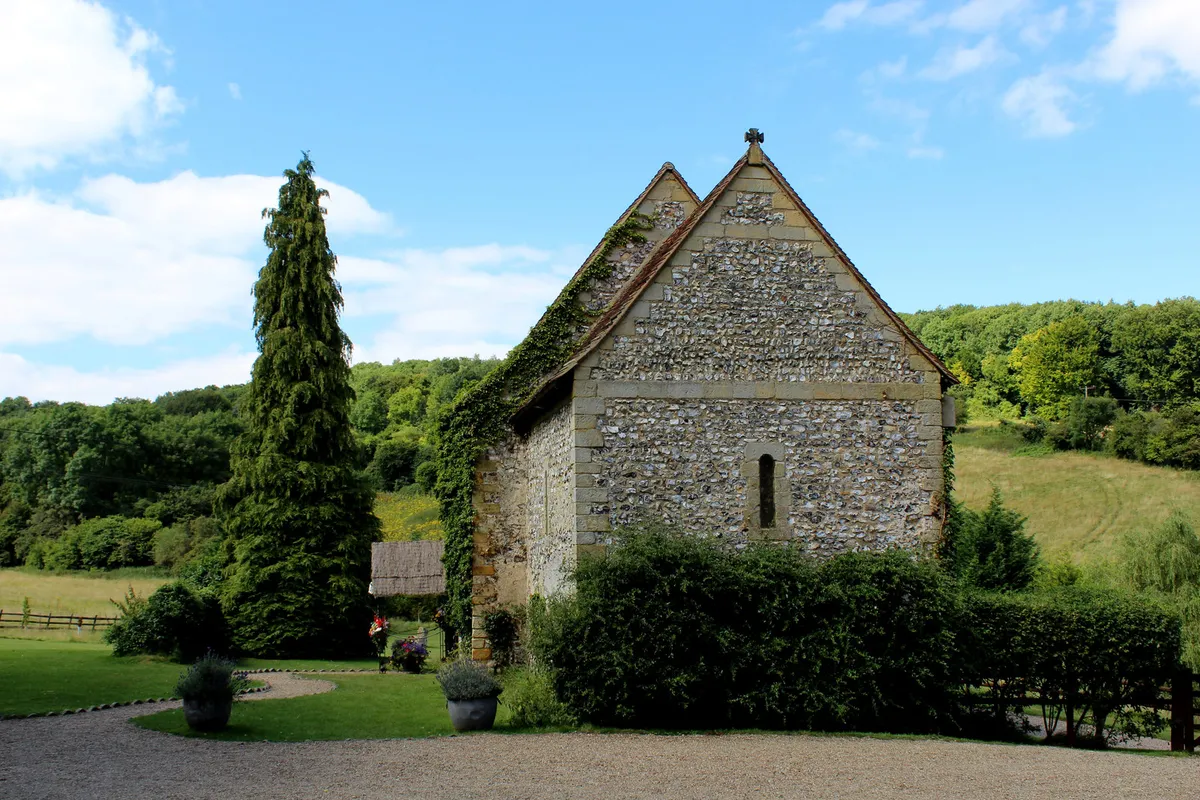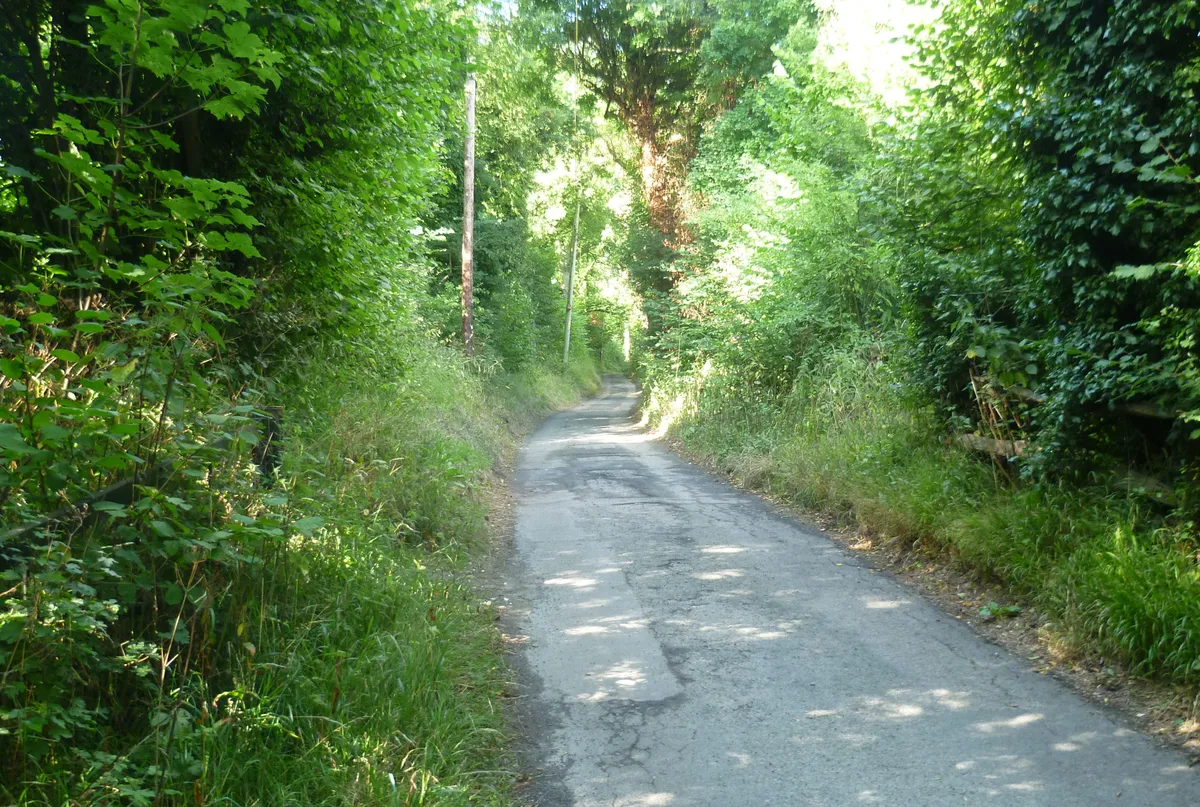Abandoned in 1367 due to the Black Death and largely destroyed, the atmospheric Lost Village of Dode is once again a place to celebrate all of life’s major milestones.
The completion of Holly Barrow columbarium, a Neolithic-style underground burial chamber, means the ancient Dode Church can now offer humanist rites of passage from birth to death, offering naming ceremonies to weddings, handfastings – a Celtic ritual binding two lives together – and end-of-life memorials.
A new stone-built burial chamber
Nestled in a quiet and remote valley deep in the North Downs, near Luddesdown in Kent, secluded Dode Church has been a centre for humanist and nature-based ceremonies since the 1990s, when it was lovingly preserved and restored by chartered surveyor Doug Chapman. Fascinated with the Dode village site since reading an article about it in the 1970s, Doug seized on the chance to buy the Grade-II listed Norman church – which included a few acres of land – when it came up for auction in the early 1990s. Doug now refers to himself as the ‘keeper’ of the site, rather than the owner.
Building the circular-chambered Holly Barrow has now completed Doug's ambitions for the village. “The real joy is not just the building of the barrow, which was an achievement itself in just nine months, but that we can offer the same services that Dode Church offered to people nearly 1,000 years ago: the three rites of passage, birth, marriage and death. And we can now offer ceremonies for all of those in a very nature-based/humanist approach. It’s back doing what it did 650 years ago – that for me is a joy.”
Restoring 12th-century Dode Church
Doug was determined to retain the building’s integrity as a church and, with the help of friends and family, slowly restored the stone and flint walls and oak-beamed ceiling of the 900-year-old building. A number of requests to hold weddings in the beautiful church prompted Doug to apply for a licence, and in 1999 the first wedding in 650 years was held within its walls. As wedding bookings quickly increased, he added two small B&B cottages nearby, plus a stone circle, where ceremonies are also held. “It’s a moving, spiritual space – often people walk in and cry. This place has affected people for generations.”

A resting place for eternity
Doug and a team of stonemasons built the underground long barrow – with space for around 800 urns containing cremated remains – over nine months in 2021, when the village was closed to visitors due to Covid. As well as the beautiful church, it seems the barrow will be Doug’s legacy, not just for his own family, but for many others. “We’ve already taken a number of bookings for the barrow; some of those people are already in urns on mantelpieces and some of these people are in their 40s, so hopefully they won’t need their place in the barrow for another 50 years or more. This is something that will roll on way beyond my and my daughter’s lifetimes,” adds Doug.
“I‘ve done what I wanted to do and my dream is complete. I’ve taken a building that was abandoned in 1367 and I’ve put it back to what it was. I’ve put it back as a nature-based spiritual site that will go on forever.”
Safeguarding the long barrow for the future
The first resident of the barrow will be laid to rest later this year and Doug is working to complete the legal essentials to safeguard the burial site for hundreds of years to come. “I built the thing quicker than I can sort out the legal side!” he adds. “Once the barrow is full and all 800 urns are in there, I won’t be around. The instructions are that the entrance will be backfilled and those people will be left in peace there, and we need to safeguard that. The door will be covered with a big stone, which is already on site.”
But will Doug – now is his 80s – want his own ashes to be interred in the barrow when the time comes? His quick retort: “I’m far too young to even consider it!”

A site of ancient historyA site of thousands of years of history and legend, Dode Church stands on a manmade mound and has a substantial Sarsen stone built into the fabric of the church itself. The narrow road leading to the site is called Wrangling Lane, indicating the mound may have been an ancient meeting place. Indeed, archaeological finds show the site was occupied during Roman times.
In 1349, the Black Death devastated the population of the village and its buildings were largely destroyed. The church was finally abandoned in 1367, shut up and never used for regular worship again. In 1901, it was resurrected from ruin by a local man who bought the building and restored it at his own expense. Today, Under Doug and his wife Mary’s care, the church’s simplicity has been preserved and its 12th-century oak pews still line the walls. When dressed for a wedding, herb-scented straw covers the floor and the soft flicker of candles illuminates the nave, creating a sensory connection to many centuries of history.
